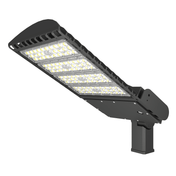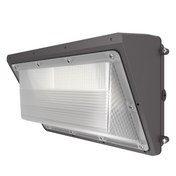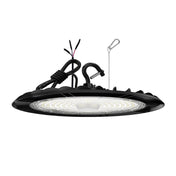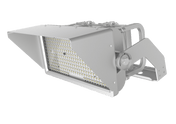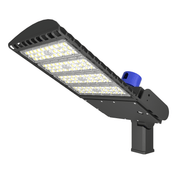Introduction: The Lighting Showdown
For decades, metal halide lights have been the standard for high-ceiling spaces like warehouses, factories, and gymnasiums. They’re familiar, relatively cheap upfront, and can produce bright light—so why are so many businesses switching to LED high bays? The answer lies in the long-term costs, performance, and practicality that separate the two technologies. Choosing between
LED high bay lights and metal halide isn’t just about replacing bulbs; it’s about investing in a lighting system that aligns with your operational goals, from cutting energy bills to reducing maintenance headaches. This blog breaks down 7 critical comparisons to help you decide which option is truly better for your space.
1. Energy Efficiency: LEDs Win by a Mile
Energy consumption is where the gap between LEDs and metal halide is most dramatic. Metal halide lights are notoriously inefficient, converting only 20-30% of electrical energy into light— the rest is wasted as heat. LED high bays, by contrast, convert 80-90% of energy into light, making them far more efficient. Let’s crunch the numbers: A 400W metal halide fixture produces roughly 24,000 lumens. To get the same brightness, you’d need only a 150W LED high bay. For a facility with 50 fixtures running 12 hours a day, 5 days a week: The metal halide setup uses 12,000 kWh annually, costing ~$1,800 at $0.15/kWh. The LED setup uses just 4,500 kWh, costing ~$675. That’s a 62.5% reduction in energy bills—saving over $1,100 per year. Over 5 years, that’s $5,500 in energy savings alone.
2. Lifespan: LEDs Last 5x Longer
Maintenance is a hidden cost of metal halide lighting. Metal halide bulbs typically last 10,000-20,000 hours—about 2-4 years with 12 hours of daily use. LED high bays, however, boast a lifespan of 50,000-100,000 hours—equivalent to 10-20 years under the same usage. For a warehouse with 100 fixtures, replacing metal halide bulbs every 3 years means 300 bulb changes over a decade, plus labor costs for ladder work (often $50-$100 per hour). LEDs, by contrast, might need zero replacements in that time. This isn’t just convenient—it’s a major cost saver. The average metal halide bulb costs $20, so 300 replacements add up to $6,000, plus $3,000-$6,000 in labor. LEDs eliminate that entire expense.
3. Light Quality: LEDs Deliver Consistency & Accuracy
Brightness isn’t the only measure of good lighting—quality matters too. Metal halide lights suffer from several flaws: They take 5-10 minutes to warm up to full brightness, flicker when starting, and dim over time (losing 20-30% of brightness after 5,000 hours). They also have low Color Rendering Index (CRI) ratings (60-70), meaning colors appear washed out or distorted—bad for tasks like quality control or inventory management. LEDs, by contrast, turn on instantly at full brightness, have no flicker, and maintain consistent light output for their entire lifespan. They also offer high CRI (80+), making colors look true-to-life. Additionally, metal halide emits light in all directions, requiring reflectors to direct it downward—wasting 30-40% of light. LEDs are directional, so almost all light goes where it’s needed, reducing glare and improving uniformity.
4. Heat Output: LEDs Stay Cool, Metal Halide Overheats
Metal halide lights are heat machines—remember that wasted energy we talked about? It’s released as heat, which can cause problems in enclosed or temperature-sensitive spaces. A 400W metal halide can raise the temperature of a small warehouse by several degrees, forcing HVAC systems to work harder and increasing cooling costs. In cold storage facilities, this heat is even more problematic, as it melts ice and disrupts temperature control. LED high bays produce minimal heat, thanks to their efficiency. Even a 200W LED emits far less heat than a 400W metal halide. This not only reduces cooling costs but also makes LEDs safer—no risk of burning workers who get too close, and less chance of igniting dust or debris in industrial settings.
5. Upfront Cost vs. Long-Term ROI
The biggest knock against LEDs is their higher upfront cost. A 150W LED high bay costs $150-$200, while a 400W metal halide fixture costs $50-$80. But as we’ve seen, the long-term return on investment (ROI) of LEDs is unbeatable. Let’s compare a single fixture over 10 years: Metal halide upfront cost ($60) + bulb replacements ($20 x 5 = $100) + energy costs ($720) + labor ($200) = $1,080. LED upfront cost ($180) + energy costs ($270) + zero replacements/labor = $450. The LED saves $630 per fixture over 10 years. For 50 fixtures, that’s $31,500 in total savings. The higher upfront cost of LEDs is recouped in 1-2 years, and after that, it’s pure profit.
6. Environmental Impact: LEDs Are Greener
Sustainability is a priority for modern businesses, and lighting plays a big role. Metal halide bulbs contain mercury—a toxic heavy metal that requires special disposal (you can’t just throw them in the trash). Improper disposal leaks mercury into soil and water, harming the environment. LEDs, by contrast, contain no mercury or lead, making them safe to recycle. Their energy efficiency also reduces greenhouse gas emissions: Replacing 100 metal halide fixtures with LEDs cuts CO2 emissions by ~100 tons per year (equivalent to planting 500 trees). Additionally, LEDs’ long lifespan means fewer fixtures end up in landfills, further reducing waste. For businesses aiming to meet sustainability goals or earn green certifications (like LEED), LEDs are the clear choice.
7. Application Flexibility: LEDs Adapt to Your Needs
Metal halide lights are one-trick ponies—they’re bright, but that’s about it. They can’t be dimmed without shortening their lifespan, and they don’t work with smart controls. LEDs, however, are highly flexible. Most LED high bays support dimming, motion sensors, and daylight harvesting systems. For example, you can dim lights in low-traffic areas or turn them off completely when no one is around (saving even more energy). They also work in extreme temperatures: Standard LEDs operate in -4°F to 122°F (-20°C to 50°C), while cold-rated LEDs handle -40°F (-40°C) for freezers. Metal halide struggles in cold weather, taking longer to warm up and dimming in sub-zero temps. LEDs also come in different form factors (UFO, linear) to fit open floors, narrow aisles, or tight spaces—something metal halide can’t match.
Conclusion: LEDs Are the Better Choice—Here’s Why
Metal halide lights made sense decades ago, but today, LED high bays outperform them in every critical category: energy efficiency, lifespan, light quality, cost savings, and environmental impact. The only advantage metal halide has is a lower upfront cost—but that’s erased by the long-term savings LEDs deliver. Whether you’re running a warehouse, factory, gym, or retail space, LEDs will reduce your energy bills, cut maintenance costs, improve worker safety and productivity, and help you meet sustainability goals. The switch to LEDs isn’t just an upgrade—it’s a smart business decision. If you’re still using metal halide, now is the time to make the change. Your bottom line, your workers, and the planet will thank you.




